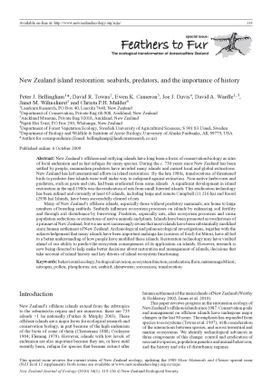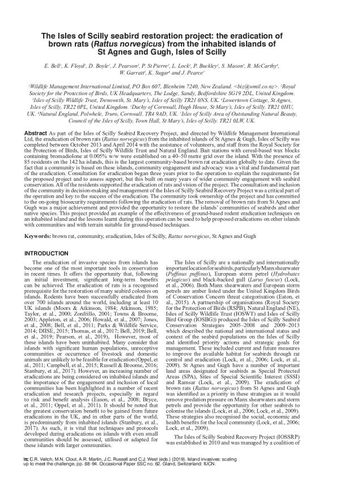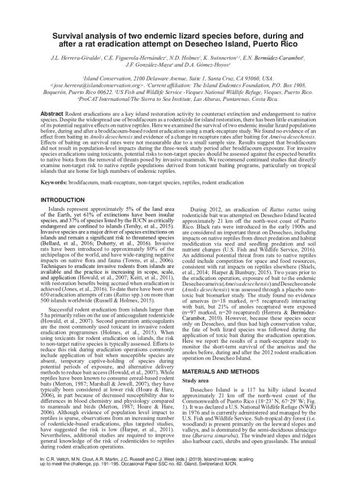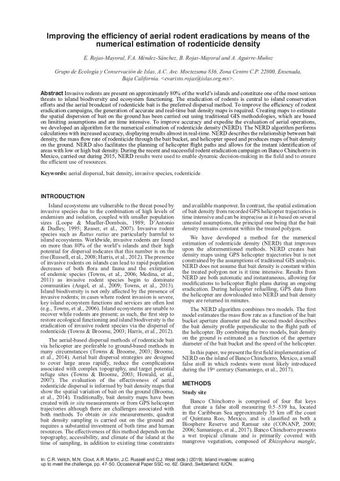New Zealand island restoration: seabirds, predators, and the importance of history
- Description:
- New Zealands offshore and outlying islands have long been a focus of conservation biology as sites of local endemism and as last refuges for many species. During the c. 730 years since New Zealand has been settled by people, mammalian predators have invaded many islands and caused local and global extinctions. New Zealand has led international efforts in island restoration. By the late 1980s, translocations of threatened birds to predator-free islands were well under way to safeguard against extinction. Non-native herbivores and predators, such as goats and cats, had been eradicated from some islands. A significant development in island restoration in the mid-1980s was the eradication of rats from small forested islands. This eradication technology has been refined and currently at least 65 islands, including large and remote Campbell (11 216 ha) and Raoul (2938 ha) Islands, have been successfully cleared of rats. Many of New Zealands offshore islands, especially those without predatory mammals, are home to large numbers of breeding seabirds. Seabirds influence ecosystem processes on islands by enhancing soil fertility and through soil disturbance by burrowing. Predators, especially rats, alter ecosystem processes and cause population reductions or extinctions of native animals and plants. Islands have been promoted as touchstones of a primaeval New Zealand, but we are now increasingly aware that most islands have been substantially modified since human settlement of New Zealand. Archaeological and palaeoecological investigations, together with the acknowledgement that many islands have been important mahinga kai (sources of food) for M?ori, have all led to a better understanding of how people have modified these islands. Restoration technology may have vaulted ahead of our ability to predict the ecosystem consequences of its application on islands. However, research is now being directed to help make better decisions about restoration and management of islands, decisions that take account of island history and key drivers of island ecosystem functioning.
- Collections:
- Secretariat of the Pacific Regional Environment Programme (SPREP)
- Content partner:
- Secretariat of the Pacific Regional Environment Programme (SPREP)
- Availability:
- Not specified
-
Copyright status: All rights reservedFind out more about what you are able to do with this itemThis item is all rights reserved, with means you'll have to get permission from Secretariat of the Pacific Regional Environment Programme (SPREP) before using it. For more information, please see our use and reuse page.What can I do with this item?Non-infringing useNZ copyright law does not prevent every use of a copyright work, and this item may be hosted by an international institute or organisation. You should consider what you can and cannot do with a copyright work.No sharingYou may not copy and/or share this item with others without further permission. This includes posting it on your blog, using it in a presentation, or any other public use.No modifyingYou are not allowed to adapt or remix this item into any other works.No commercial useYou may not use this item commercially.
Related items
Welcome and warm Pasifik greetings
The information on this site has been gathered from our content partners.
The names, terms, and labels that we present on the site may contain images or voices of deceased persons and may also reflect the bias, norms, and perspective of the period of time in which they were created. We accept that these may not be appropriate today.
If you have any concerns or questions about an item, please contact us.



